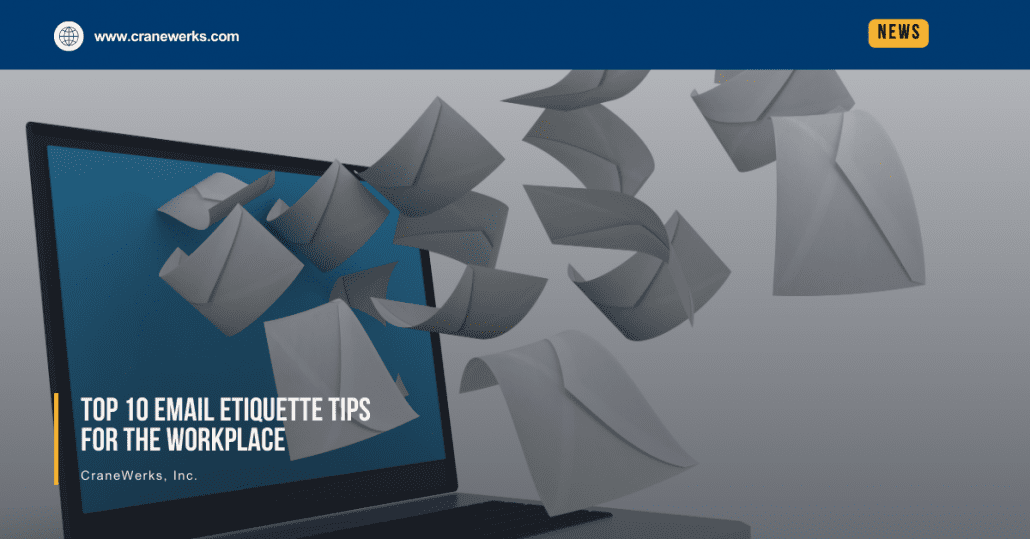Top 10 Email Etiquette Tips for the Workplace
Community
When you’re sending or replying to emails, keep these top-notch email etiquette practices in mind: Replying, formatting, tone, replies, and more!

Community
When you’re sending or replying to emails, keep these top-notch email etiquette practices in mind: Replying, formatting, tone, replies, and more!
A solid business email follows a simple structure: subject line, greeting, body, call-to-action, and sign-off. Keep your body paragraphs short and organized so your message is clear. Make sure to end with a call to action, letting the recipient know exactly what you need them to do next.
Use standard fonts like Times New Roman or Arial, and keep colors and sizes professional. Limit bold and italics to one word or phrase per email. If you’re copying and pasting text, clear any weird formatting before sending to ensure your email looks uniform.
Proper spelling and grammar are crucial in business emails. Always proofread before sending. Double-check the spelling of names and email addresses too. Consider using plugins that help catch errors automatically.
Stick to sentence case for formal communication. Using all caps can come off as aggressive and unprofessional. For instance:
“Michael, it was great seeing you at the meeting. I look forward to connecting again soon.”
“MICHAEL, IT WAS GREAT SEEING YOU AT THE MEETING. I LOOK FORWARD TO CONNECTING AGAIN SOON.”
If possible, include information in the email body instead of attaching documents. If you must attach a file, mention it in your email and consider compressing large files or using a shared link. This keeps your recipient’s inbox from getting cluttered.
Be mindful of your word choices and how your tone may be perceived. Use positive language like “opportunities” and “challenges” instead of negative terms. Steer clear of sarcasm and overly emotional adjectives.
Email isn’t always secure. Avoid sharing sensitive information like passwords. Protect personal and confidential details.
Using “Reply all” lets you respond to everyone involved in a conversation, keeping all parties in the loop. However, when you’re unsure, stick to “Reply” to avoid bombarding everyone’s inbox. Think about who really needs the information before hitting that “Reply all” button.
It’s courteous to respond to emails within 24 hours. If you receive a lot, sort out the spam and unsubscribe from unwanted lists. Even a brief acknowledgment is appreciated. If you miss the 24-hour window, apologize and explain the delay. Remind recipients about time-sensitive matters if necessary.
If you’re out of the office, set up an automated response. Include “Out of Office” and the date in the subject line. Let people know when you’ll be back and provide a contact for urgent matters. Start with “This is an automated message while I am out of the office.
Following these tips ensures your email communication is clear, professional, and effective, keeping you on top of your game at work.
 https://www.cranewerks.com/wp-content/uploads/2025/04/JFL-FEAT-IMG.png
628
1200
CraneWerks
https://www.cranewerks.com/wp-content/uploads/2023/09/CW_FC-WEB-Logo_23.svg
CraneWerks2025-04-02 11:34:342025-04-02 14:20:31Jobs for Life at Shelby Supply Company
https://www.cranewerks.com/wp-content/uploads/2025/04/JFL-FEAT-IMG.png
628
1200
CraneWerks
https://www.cranewerks.com/wp-content/uploads/2023/09/CW_FC-WEB-Logo_23.svg
CraneWerks2025-04-02 11:34:342025-04-02 14:20:31Jobs for Life at Shelby Supply Company https://www.cranewerks.com/wp-content/uploads/2025/03/WELDING-MONTH-FEAT-IMG.png
628
1200
CraneWerks
https://www.cranewerks.com/wp-content/uploads/2023/09/CW_FC-WEB-Logo_23.svg
CraneWerks2025-03-19 12:10:172025-04-15 15:22:57Celebrating National Welding Month
https://www.cranewerks.com/wp-content/uploads/2025/03/WELDING-MONTH-FEAT-IMG.png
628
1200
CraneWerks
https://www.cranewerks.com/wp-content/uploads/2023/09/CW_FC-WEB-Logo_23.svg
CraneWerks2025-03-19 12:10:172025-04-15 15:22:57Celebrating National Welding Month https://www.cranewerks.com/wp-content/uploads/2025/03/BUDDIES-HELPING-BUDDIES-BOWLING-FEAT-IMG.jpg
628
1200
CraneWerks
https://www.cranewerks.com/wp-content/uploads/2023/09/CW_FC-WEB-Logo_23.svg
CraneWerks2025-03-03 12:56:222025-03-04 09:20:08Buddies Helping Buddies: Strikes for a Cause
https://www.cranewerks.com/wp-content/uploads/2025/03/BUDDIES-HELPING-BUDDIES-BOWLING-FEAT-IMG.jpg
628
1200
CraneWerks
https://www.cranewerks.com/wp-content/uploads/2023/09/CW_FC-WEB-Logo_23.svg
CraneWerks2025-03-03 12:56:222025-03-04 09:20:08Buddies Helping Buddies: Strikes for a Cause
 CraneWerks Cares: Impacting Communitites
CraneWerks Cares: Impacting Communitites